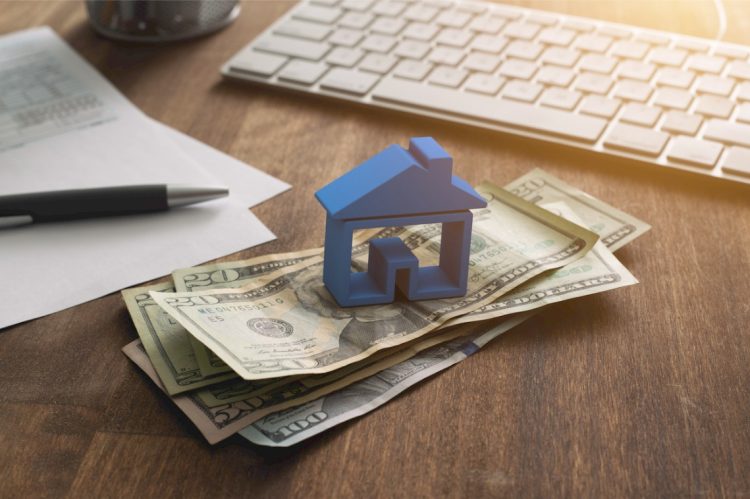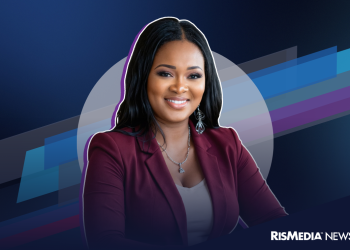Pop quizzes are never much fun for students. Luckily, adults don’t have to worry about them. Or do they? Well, real estate agents do, because things have changed over the years. The days when almost every buyer automatically took a 30-year mortgage are pretty much over. Now, not only are there all kinds of mortgage variations, but there are various financing options as well.
And while “I don’t know but I’ll find out” may be an honest reply to a challenging question from a buyer, wouldn’t you rather answer immediately to show your expertise and value, especially in these negotiated-commission times?
Take mortgage buydowns. Could you explain its intricacies to a client? If the answer is yes, then move onto another RISMedia story. Everyone else, continue reading.
Let’s first define it. A mortgage buydown is an arrangement where an upfront payment is made to secure a lower interest rate on a mortgage loan, either permanently or for a temporary period. The payment reduces the borrower’s monthly payments for a set time, or lowers the interest rate for the entire loan term. Buydowns can be paid for by the buyer, seller, builder or lender, and can be a valuable tool to lower costs, though they require an upfront fee.
The most common buydown structures include:
- 3-2-1 buydown: The interest rate is reduced by 3% for the first year. It will then increase by 1% per year for the next three years. The buyer will start paying the full interest rate in the fourth year.
- 2-1 buydown: The interest rate is reduced by 2% in the first year and then increases by 1% per year for the next two years. The buyer will start paying the full interest rate in the third year.
- 1-1 buydown: The interest rate is reduced by 1% in the first year and increased by 1% in the second year. The buyer will start paying the full interest rate in the second year.
Looking at the way Investopedia breaks it down, say you’re borrowing $250,000 with a 30-year mortgage at 6.75% interest, and the seller of the home paid the fee as a concession. Here’s what your buydown options may look like:
| 3-2-1 Buydown | 2-1 Buydown | 1-1 Buydown |
| Year 1: $1,158 at 3.75% interest | Year 1: $1,304 at 4.75% interest | Year 1: $1,459 at 5.75% interest |
| Year 2: $1,304 at 4.75% interest | Year 2: $1,459 at 5.75% interest | Year 2: $1,459 at 5.75% interest |
| Year 3: $1,459 at 5.75% interest | Year 3: $1,622 at full 6.75% interest | Year 3: $1,622 at full 6.75% interest |
| Year 4: $1,622 at full 6.75% interest | N/A | N/A |
| Total savings: $11,324 | Total savings: $5,759 | Total savings: $3,902 |
For another example, say after a seller concession pays the fee you are borrowing $337,920 (the loan amount after a 20% down payment on NAR’s recent median home price of $422,400) with a 30-year mortgage at 6.56% interest (Freddie Mac’s recent average 30-year fixed-rate mortgage rate). Here’s what your buydown options may look like:
| 3-2-1 Buydown | 2-1 Buydown | 1-1 Buydown |
| Year 1: $1,529 at 3.56% interest | Year 1: $1,724 at 4.56% interest | Year 1: $1,931 at 5.56% interest |
| Year 2: $1,724 at 4.75% interest | Year 2: $1,931 at 5.56% interest | Year 2: $1,931 at 5.56% interest |
| Year 3: $1,931 at 5.75% interest | Year 3: $2,149 at full 6.56% interest | Year 3: $2,149 at 6.56% interest |
| Year 4: $2,149 at full 6.56% interest | N/A | N/A |
| Total savings: $15,159 | Total savings: $7,714 | Total savings: $5,228 |
“Rate buydowns have definitely become a bigger part of the conversation in today’s market,” says Josh Jarboe, broker/owner of REMAX Empire Buyers in Kentucky. “With affordability being one of the biggest challenges buyers face, a buydown can often be the piece that gets a deal across the finish line. I’ve seen them make a meaningful difference, especially when sellers are motivated to stand out against competing listings.
“In my own business, buydowns have turned what initially looked like a dead deal into a closing. For example, when buyers stretched to get into a home they loved, but payments fell out of reach, negotiating a 2-1 buydown through seller concessions made the monthly payment manageable and gave them breathing room until refinancing became an option. From the seller’s side, it can be a more effective strategy than a straight price reduction, since the monthly savings for the buyer is often more impactful than a $10k – $15k discount off list price.”
Jeffrey Decatur, a broker associate with REMAX Capital in upstate New York, cautions that it’s not all upside utilizing mortgage buydowns. There are many questions that you should ask buyers before having them consider a buydown.
“Buydowns can be a double-edge sword, like a refi, and/or ARMs,” he says. “How long are you going to be there, how much does it cost, and how much are you going to save? Are you going to be able to recoup the cost? If you are buying down a rate, what are the chances you are going to have to refi in the future anyway?
“A buydown sounds good on the surface, like ‘Pay x and your payment will go down xx, saving you thousands over the life of the loan.’ That sounds great, but how many people keep that loan for the full 30 years to reap the entire benefit? Or, like most people, are you going to move in seven to 10 years? Take that original fee and divide it out? What if rates go down and you refinance? You just paid that money for how much savings for how long?”
Decatur added that some mortgage people are paid more for selling these types of financing products, so they are incentivized to do so. A buyer should look at the big picture. Many times, depending on the previously stated criteria, a buydown is not worth it. Often, it is just better to add a little to the principal every month, which ultimately changes the overall effective interest rate themselves.
“Mortgage lenders hate it when I show that to a buyer,” he says. “There are times when a buyback works out and is beneficial. I just make sure clients know the ins and outs.”
Pam Rosser Thistle, an agent with Berkshire Hathaway HomeServices Fox & Roach, REALTORS® in Philadelphia, is another who makes sure buyers know all the options available.
“Rates are higher now than we expected them to be when rate buydowns were promoted,” she says. “I have buyers explore different options, like 20% down, 10% down, even a 15-year conventional or 7-year ARM if appropriate.”
Nevertheless, in the right circumstance, a mortgage buydown can be very impactful. Jarboe noted that he has personally taken advantage of one.
“When my wife and I purchased a new home in December 2022, we utilized a temporary 2-1 buydown,” he explained. “That structure saved us more than $25,000 over the first 24 months, so I know firsthand how powerful they can be in creating affordability without having to ‘wait out’ the market or settle for something less.
“And wearing both hats as the principal broker/owner of REMAX Empire & Motto Mortgage A2Z, I’m positioned to be well-versed in creative ways to help both buyers and sellers. Buydowns, when paired with other tools like closing cost credits or even marketed as a temporary ‘rate sale,’ are just one example of how I’ve been able to make deals come together that might not otherwise happen.”
In summary, here are the pros and cons associated with mortgage buydowns:
Pros
- Interest savings: With a mortgage buydown, the buyer is able to save thousands of dollars in interest during the first few years of the mortgage.
- Lower monthly payment: A buydown helps the buyer get a lower monthly payment during the first few years, which can help ease into paying a mortgage.
- Negotiation tactic: A buydown can be a way for sellers to finalize a deal without coming down in the price of the house.
Cons
- Upfront fees: Buydowns require large upfront fees, usually paid by the seller or builder. Because the fees are steep, sellers and builders may be less likely to offer them.
- Temporary: Buydowns typically last anywhere from one to three years.
- Default risk: The increase in the mortgage payment when the buydown ends could increase their chances of not being able to afford the mortgage.












